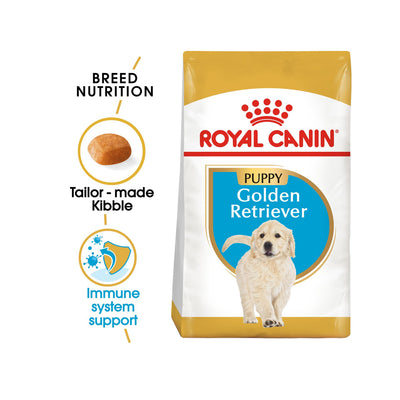Whether traveling by air, road, rail or sea
By Devanshi Shah
August 22, 2022 (IANSlife) Even though India's pet travel market is booming, we haven't noticed a noticeable increase in high-quality service providers in this area. If it weren't so simple, who wouldn't want to take their cherished pets on vacation with them? Larger pets require a lot more preparation than smaller creatures, who are less difficult to travel with. More importantly, have you considered how your pet will handle the journey experience and what you can do to emotionally prepare them? Let's examine some of the various modes of transportation and the corresponding advice that pet parents may employ to make their pets more comfortable throughout the trip.
Considering taking your pet on a flight? In India, Air India is one of the few airlines that provides pet-flying services. While larger pets must be placed in the cargo hold, smaller pets can be transported as accompanying baggage. Since your smaller pets will be travelling with you, they are likely to experience less worry. It's crucial to pack your pets' necessities adequately so you can provide them with food and water as needed. Additionally, check with the airline employees to see where your pet can go potty before boarding the trip, and make plans to have a poop mat on hand in case your pet needs to go potty while the flight is in progress.
You could be required to sedate the animals for the flight if they are large pets that need to travel in cargo. You should attempt to avoid sedated your pets as much as you can, as any veterinarian would advise you. If necessary, speak with your veterinarian about the appropriate sedatives for your particular pet's needs. Pet owners must also make sure to mentally prepare their animals for being taken away from them and handled by airport workers, as will happen in the case of cargo transit.
One can start doing this by training the pet to spend time by themselves for at least one to two months before travel. Start by gradually putting your pet in a separate room from you for 15-20 minutes. Over a few weeks increase this time to up to 4-6 hours. One could also leave the pet to spend time with someone they’re less familiar with, like a close friend or family member. This will help the pet in getting used to being alone and with a handler, greatly contributing to reduce separation anxiety. One must also ensure that the cage provided for the pet is well ventilated and roomy so the pet has some space to move around and stretch their legs for long journeys. Another trick that really helps is to leave a cloth or blanket with the pet that smells of you, to keep the pet reassured while they’re alone. The same should be done for international travel, where flight times are much longer. On the basis of how often your pet eats, ensure to plan their meal before or after landing. In most cases, pets should not be fed for 4-6 hours before travelling.
When travelling internationally by air, it is key to consider some more factors. Pet vaccination requirements are different globally. You must speak to your travel agent or local embassies as well as your vet to ensure that you’ve given or start the vaccination requirements well in advance before you travel in accordance with the requirements of the specific country you’re travelling to. Other factors that help reduce anxiety are to travel in less busy seasons. This will ensure more room in the cargo holds as well as less chaos at airports. Travelling during holiday seasons is generally a bad idea. You should also only take direct flights as this will reduce the travel time as well as avoid transfer from one plane to another. Do also check with airlines about temperature control in cargo holds. Most airlines do not have temperature control and may even restrict travel with pets during extreme weather months of both summer and winter.
The last, but by no means the least, tip for flying and quite frankly one of the most important is to attach identification details to your pet’s collar. The fear of losing your pet in travel is a very real one, and so you must ensure to provide an extra amount of detail which may include your name, your final destination, any relevant addresses (from and to), and your phone number. You may even attach a digital tracker to your pet’s collar so you can see their location through your phone. It is also key to communicate with the airline and have a point of contact to handle your pet related queries. Given any sudden or unwanted incidents, you don’t want to be in a position where you’re struggling to find the correct person to communicate within the airline.
Pets should generally not travel internationally unless they are moving. Even perilous, flying can be for some animals. The small nasal passages of pets with short heads and flat noses, such as Pugs, Boxers, Bulldogs, or Persian cats, make them susceptible to oxygen deprivation and stroke.
One might mostly adhere to the rules for air travel when travelling by sea. While it is generally not permitted for pets to travel by sea in India, some cruise liners do allow pets in designated kennel areas. Given that there aren't many possibilities, one should inquire early on about the rules and regulations of the particular business. Varied operators may have quite different interpretations of these laws and regulations. The flying option is preferable when wanting to relocate pets because it is considerably faster and thus will significantly lessen associated worry.
There are of course options to go private with both jets and yachts, which allow you to be with your pet and have immense support from the operator’s staff, but this of course is a very costly affair.
Time to hit the road. One of the most preferred ways to travel with pets, is in the comfort of your car. But is your pet used to sitting in the car for long durations? Many pets face anxiety when sitting in vehicles and so you must ensure to get your pets used to being in a car from a young age. Take trips with them regularly, so they get over any vehicle associated anxiety. In most cases, pets visit their vets in a car and so do not face this problem, but if your pet has such a problem, start by taking short trips and gradually increase the length of these trips to alleviate associated stress. Ensure to pack all your pet’s essentials such as food, water, medicines etc. What is key is to simply plan your journey. You must ensure enough stops on the way where your pet can exit the vehicle to relive themselves. When planning journeys that will extend beyond a day, do ensure to identify pet friendly hotels where you can stop for the night to break your journey. Make sure you carry enough food with you, as some hotels may not provide food for pets. Pets simply need enough space within the vehicle to sit comfortably or they will be scrambling around for a large part of the journey and what is also a must is to have a pet seatbelt. These seatbelts attach to their collars keeping them safe in the case of a sudden or forced stoppage. While it may add to the journey time, it is imperative to drive safely and not a rash manner.
Travelling by train is also a great option within India. If possible, pet parents should try to book out a first-class sleeper cabin. Having the whole cabin to yourself is ideal, as you do not have to deal with the anxieties of other passengers that may transfer to your pet. Other passengers in your cabin, if they happen to have a problem with your pet, would be well in their rights to request train staff to have the pet removed from the cabin. This will result in staff putting your pet in a cage within the cargo section of the train. If you must share the cabin, ensure to make other passengers befriend your pet right from the get-go! This will make the journey a more enjoyable one for all involved. Keep a track of long and short stops along the journey so you can plan short walks for your pet on the longer stops, where they can relieve themselves. Do try to remember that you’re travelling on public transport and so ensuring a clean environment is a must to avoid any altercations with fellow passengers which can be a huge point of stress. Keep a poop mat, and a cleaning equipment such as a spray as well as wipes handy to quickly sanitise any unwanted messes. Carry your pets bedding, so they can enjoy long naps on the sleeper beds. It is also a must to keep a walking stick handy to deal with stray animals at train stations. Tipping “Coolies” or staff within the train and on stations will find you a very useful and informative friend. They will keep you updated on all stops, and even help you move through busy stations avoiding the general “jantaa” and in dealing with strays.
For both road and rail travel, many pet parents find it easier to give their animals medications, but this should be mainly avoided. Consult a veterinarian about light sedatives you can offer to your pet to keep them peaceful for the duration of the trip if you have to make an emergency trip with one who is simply not up for the ride. It is preferable than knocking them out entirely!
(Devanshi Shah, Founder & CEO PetKonnect)
(This article is website exclusive and cannot be reproduced without the permission of IANSlife)
IANSlife can be contacted at ianslife@ians.in
Read full article - https://ianslife.in/life-style/how-deal-travel-anxiety-your-pet


















![5 Fun Facts About [Popular Pet Breed]](http://www.petkonnect.in/cdn/shop/articles/5_Fun_Facts_About_Dog_Pet_Breeds.png?v=1716969117&width=400)


